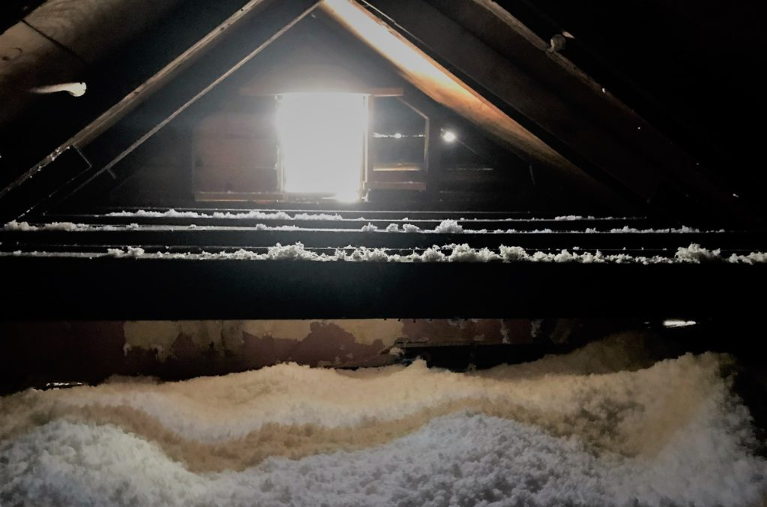Read the full story here.
Sometimes, preserving the best of something old means trying something new. In a city like Charleston, with deep cultural roots and more historic buildings than you can count, the effects of development on neighborhood preservation and the growing impacts of climate change demand a new approach that can address both issues simultaneously. Threats of sea level rise and storms have galvanized an interest in increasing energy efficiency and flood protection in the historically significant Eastside neighborhood.
In partnership with the Sustainability Institute, the City of Charleston is trying new approaches through a $150,000 grant from the Southeast Sustainable Communities Fund (a project of the Southeastern Sustainability Directors Network and The Kendeda Fund, with support from Merck Family Fund). With this funding, the partners will test solutions like weatherization, solar power, and flood-proofing for Eastside’s low-income homeowners.
 The Sustainability Institute’s work in Eastside started with what they know best —weatherization —to build trust with the community. Executive Director Bryan Cordell and his staff are working with Latonya Gamble, president of Eastside Community Development Corporation (ECDC), a nonprofit that serves as the Eastside neighborhood association. Together, Cordell and Gamble determined that the team would begin with a three-fold approach: 1) conduct a series of community education workshops; 2) do door-to-door outreach to identify low-income home owners and encourage them to welcome free weatherization; and 3) weatherize ECDC’s historic, two-story office structure as a community demonstration project.
The Sustainability Institute’s work in Eastside started with what they know best —weatherization —to build trust with the community. Executive Director Bryan Cordell and his staff are working with Latonya Gamble, president of Eastside Community Development Corporation (ECDC), a nonprofit that serves as the Eastside neighborhood association. Together, Cordell and Gamble determined that the team would begin with a three-fold approach: 1) conduct a series of community education workshops; 2) do door-to-door outreach to identify low-income home owners and encourage them to welcome free weatherization; and 3) weatherize ECDC’s historic, two-story office structure as a community demonstration project.
At the heart of the Sustainability Institute’s success is a focus on providing workforce development for green jobs and careers, particularly among at-risk populations. It’s the first AmeriCorps program in the country to focus on energy upgrades for low-income people. It also includes soft skills and industry training, providing participants with robust work and personal skills that enable them to land jobs and thrive as contractors, energy auditors, or whatever they desire in the industry.
In the fall of 2018, the Sustainability Institute completed an energy upgrade retrofit of the ECDC building and began doing outreach. At its first community workshop, 25 local families learned ways to improve energy efficiency in their own homes, and about the free weatherization and upgrade services available from the Sustainability Institute. Since that workshop, the Sustainability Institute has conducted several energy assessments in Eastside and completed its first residential retrofit for an elderly, long-term resident. The goal is to complete 15 full home retrofits in 2019, with five also receiving solar and flood-proofing improvements. An additional 15 to 20 houses will receive weatherization.
 Although the solar and flood-proofing work are still to come, the City’s Sustainability Director, Katie McKain, sees the weatherization and outreach as an early win. “Reducing emissions is a huge part of mitigating climate change,” says McKain. “A key component to supporting energy upgrades is that it not only helps residents and reduces their costs, but also reduces the demand on energy. That’s a win-win for everyone.”
Although the solar and flood-proofing work are still to come, the City’s Sustainability Director, Katie McKain, sees the weatherization and outreach as an early win. “Reducing emissions is a huge part of mitigating climate change,” says McKain. “A key component to supporting energy upgrades is that it not only helps residents and reduces their costs, but also reduces the demand on energy. That’s a win-win for everyone.”
Cordell is also interested in increasing demand for energy efficiency among consumers in Eastside and beyond. One way to do that for low-income homeowners is to identify innovative, alternative methods of financing energy audits and upgrades. Cordell is exploring the possibility of working with a financial partner to establish a revolving loan fund, as well as creating new ways for low-income customers to access credit with area banks.
“This is an opportunity to see what works,” says Mark Wilbert, Charleston’s Chief Resilience Officer. “Anything we can do to help residents have more resilient homes, that’s a good thing for us because, house by house, we become a more resilient city. If there are low cost opportunities that work in the Eastside, maybe there are things we can apply in similar neighborhoods and go after additional funding to make solutions more available throughout Charleston.”





